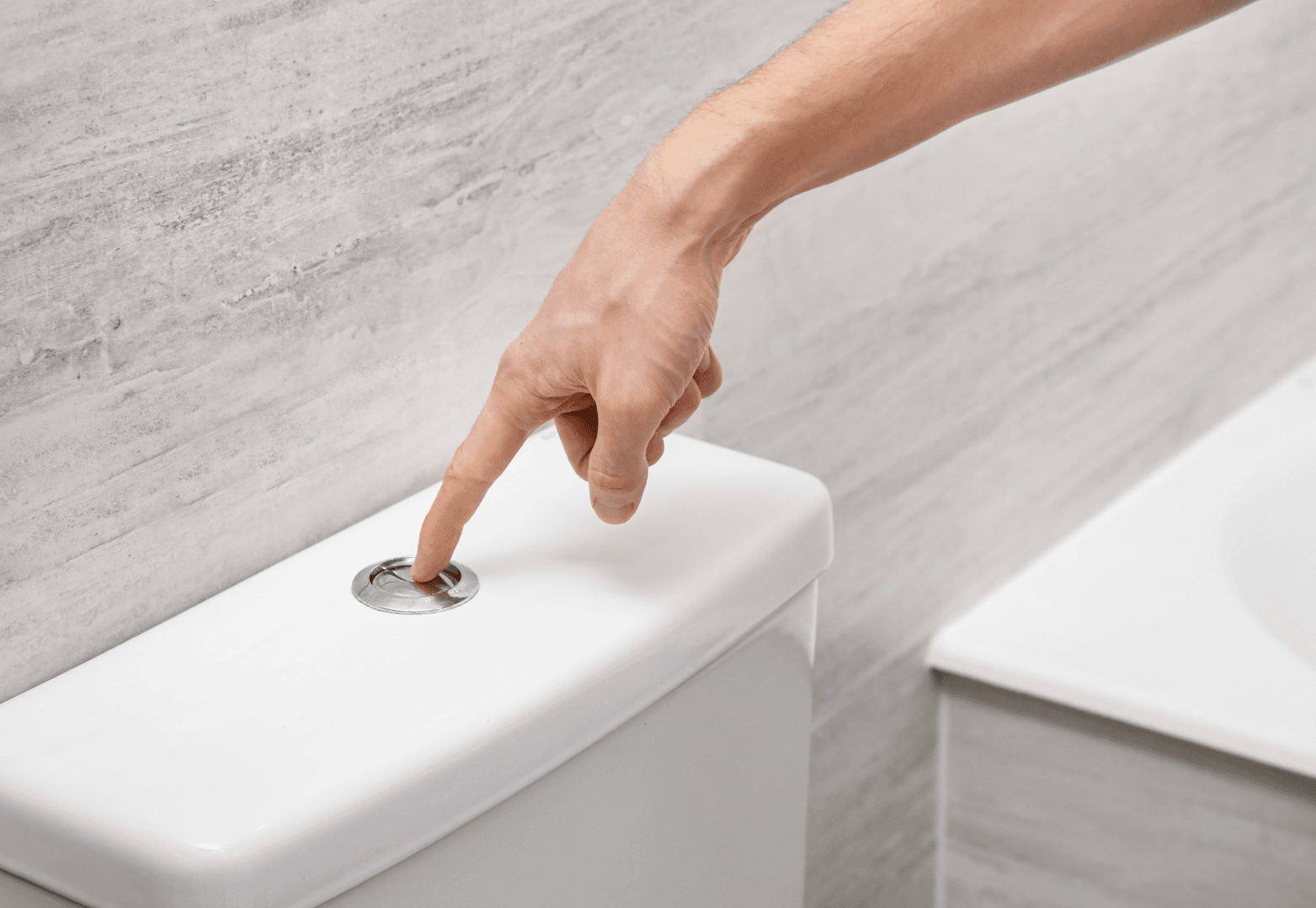There is an opinion that if you press the flush button in the toilet without first closing the lid, tiny water particles can scatter throughout the restroom, and bacteria from them can settle on a toothbrush, door handle and other objects. We decided to check whether there are grounds for such fears.
The media writes that before flushing you need to lower the toilet lid (for example, “Gazeta.ru", "New hearth" And "Moskovsky Komsomolets"). Popular articles on this topic on specialized resources dedicated to plumbing, and also home And everyday life. Users social networks, forums And blogging platforms They are discussing whether it is necessary to flush the toilet with the lid down. Website visitors questions And answers also interested need to should I do this and if so, then For what.
Through the fecal-oral route of spread transmitted many different diseases: parasites, hepatitis A, rotavirus, norovirus, coronavirus, influenza, dysentery, etc. Moreover, a person may not even be aware of infection with some of them until a certain moment, already being a carrier of the pathogen. Of course, no one wants to find this “bouquet” on their toothbrush. But can viruses and bacteria really get there when the toilet is flushed?
Since the mid-1970s, microbiologists warnedthat yes, they can. When flushing the water, part of the contents of the toilet splashes out - in the form of both large drops and a fine water suspension, which is not visible to the naked eye, but remains in the air for quite a long time and can settle on all surfaces of the bathroom. Such small drops were also found on a toothbrush if the bathroom was shared, as well as on other surfaces: bathtub, towels, door handles, toilet paper holder, etc.
In 2022, scientists from the University of California at Boulder (USA) conducted experiment, to measure the speed and trajectory of these small particles flying out of the toilet when flushed, and at the same time show people that this is not a joke at all. They installed lasers and cameras in a public toilet that did not have toilet lids that detected aerosol particles as they were flushed. It turned out that the water suspension bursts out of the toilet at a speed of 2 m/s to a height of up to 1.5 m within 8 seconds. after draining the water. Moreover, if large droplets settle quickly, then the aerosol can remain in the air and spread for several minutes (which is especially true for public toilets, where visitors usually change frequently).
Researchers from University College Cork (UK) in 2019 studied air composition in a public toilet during the week. Bioaerosol sensors recorded the number and size of particles present in the air, as well as the bacteria content in them. It turned out that when the toilet lid was closed before flushing, the number of bacteria in the air was 30–60% less. True, the size of the droplets and the concentration of microorganisms in them also increased, and they remained in the air for 11 minutes longer. Scientists have not specified exactly how the closed lid affects this.
In 2021, Chinese scientists conducted review existing scientific literature on the topic and also concluded that toilet aerosol emitted when flushed poses a health risk to people, especially in public toilets or when sharing the same household with an infected person. On the contrary, a closed toilet lid, according to the scientific works studied, seriously reduced these risks.
Returning to toothbrushes: The American Society for Microbiology held a 2015 study at Quinnipiac University (USA), studying the brushes of students living in a dormitory and using shared bathrooms. Fecal bacteria were found on 60% of the brushes. It is especially dangerous, the researchers emphasize, that in public bathrooms these can be particles of other people’s excrement with pathogenic microflora unfamiliar to the body of a particular person. This could potentially lead to the spread of infections. The scientists did not specify how the bacteria got on the toothbrushes, however, based on the observations described above, it can be assumed that at least some of them initially spread in the form of an aerosol when flushing a toilet with an open lid.
Although there is research suggesting that inhalation or involuntary ingestion of these microparticles can lead to serious illness, there are experts who disagree. Thus, Professor Kelly Reynolds from the University of Arizona believesthat if toilet visitors do not have infections transmitted by the fecal-oral route, then, most likely, there will be no particular harm from inhaling or swallowing the aerosol. American Dental Association asserts, that there is no convincing evidence yet that fecal bacteria on a toothbrush can actually have any negative impact on human health.
Thus, if you do not close the toilet lid while flushing, tiny water particles contaminated with bacteria contained in excrement can escape from the toilet, remain suspended in the air for some time, and then settle on surrounding surfaces. This could potentially lead to the spread of infections, especially in public toilets. At the same time, the lowered lid also does not protect against this “toilet plume” 100%, however, according to studies, it significantly reduces the number of such particles.
Cover photo: canva.com
Is it true
Read on the topic:
- Is it true that you can catch many diseases by sitting on a public toilet?
- Is it true that chicken egg shells must be washed before cooking to avoid salmonellosis?
- Is it true that you should brush your teeth before breakfast to avoid swallowing bacteria?
- Is it true that there are more bacteria in the human body than cells of the body itself?
If you find a spelling or grammatical error, please let us know by highlighting the error text and clicking Ctrl+Enter.






